5 Things You Should Know Before You Visit Laos
Visitors to this surprising country will enjoy rich culture and beautiful scenery without the tourist crowds found elsewhere in Southeast Asia. Check out these travel tips to learn what traveling in Laos is like and why it's worth visiting.
Shares
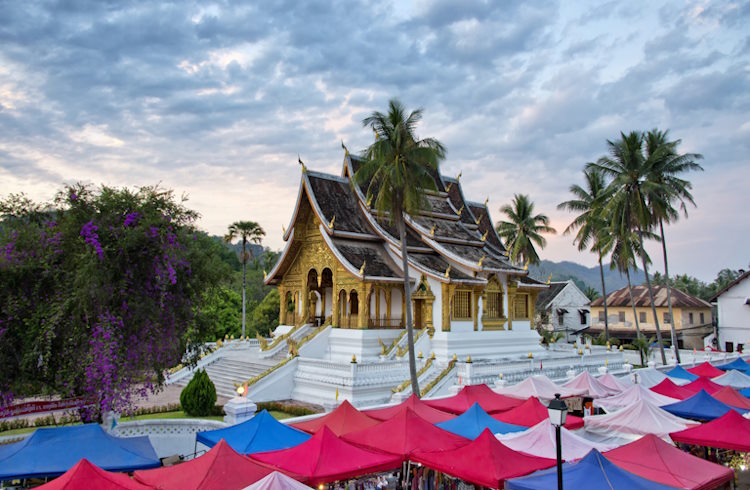 Photo © Getty Images/Paul Biris
Photo © Getty Images/Paul Biris
However you look at it, Laos is a land of surprises. You might find yourself feasting on French cuisine or tucking into a hearty bowl of ant-egg soup. You could spend a morning watching a procession of saffron-clad monks and enjoy afternoon tea on the deck of a Mekong riverboat. You might be picked up at your hotel by a battered tuk-tuk to be transferred to a space-age bullet-train.
While this beautiful country full of enchanting people invariably lives up to expectations, it also defies generalizations. The following travel tips will help prepare you so that Laos will only surprise you in the most positive ways.
- Cross-country travel in Laos
- Getting around towns and cities
- Laos river exploration
- Money in Laos
- Laotian food to try
Cross-country travel in Laos
While this country is ideally suited to slow, leisurely travel, the 160km/hr Boten–Vientiane railway is the best way to jump-start a relaxing holiday for many travelers. The line, running between Vientiane (the capital) and the northern town of Boten (on the border with Yunnan, China) officially opened in December 2021, making the historical city of Luang Prabang accessible in a mere two hours.
The Chinese-built railway stations on this line – like immense plate-glass and concrete mausoleums – could put to shame a great many international airports (including Vientiane’s Wattay International Airport).
Laos road networks are hardly space-age, however, and long-distance buses are typically slow. Buses between Vientiane and the other main tourist hotspot of Luang Prabang, for example, take around 10 hours – although faster minibuses can sometimes cut the journey-time to six hours.
Many travelers choose to rent a motorbike and travel independently – especially on the picturesque 5-day ride known as the Tha Khaek Loop – but bear in mind that traffic police have cracked down hard on riders without licenses (regardless of what the people renting the bikes might tell you). Also, it is both illegal and foolhardy to ride without a crash-helmet*.
Getting around towns and cities
Spanish-speaking travelers might be a little thrown by the name (which means “crazy” in Spanish) but LOCA is the national version of the Uber or Grab ride-hailing app and the only one that functions in Laos. It’s expensive for long distances but hard to beat for short distances during non-peak hours, since you don’t need to explain locations or haggle the price.
Songthaews are shared taxis that most often take the form of a row of seats in the back of a covered pickup truck. They run along pre-arranged routes among villages and through more remote areas. Use a translation app to make certain that the driver understands your destination and ask him to advise you when to hop off. You usually have to arrange the rate in advance, but it’s normal to pay on arrival. Getting around by Songthaew can be a great way to make Laotian friends.
Laotian tuk-tuks (grandly named “Skylabs”) tend to be larger than the speedy models that have become Thai icons. They are higher off the ground, perhaps to deal with the deeper Laotian potholes. You still hire the vehicle for private transport but since they accommodate eight passengers – sometimes more! – don’t be surprised if the driver stops along the route to pick up another passenger whose general direction coincides with your own.
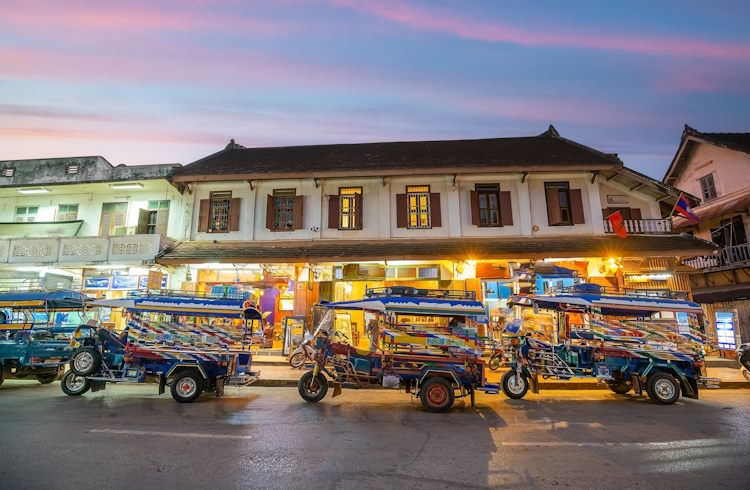
Laos river exploration
For a landlocked country there are a lot of boat voyages to be had in Laos. The Mekong River has been a major transportation hub in Laos for millennia and if you spend a little time traveling in the country you’re sure to take to the water from time to time. Luang Prabang makes a minor industry out of unforgettably romantic sunset cruises (often complete with canapes and cocktails) but there are also nippy little Mekong speedboats and sedate multi-day cruises to carry you between riverside communities.
You can find a variety of slow boats and river taxis plying the waterways around Luang Prabang, Huay Xai, and Vang Vieng. As is frequently the case in Southeast Asia’s most beautifully unspoiled backwaters, slower is often better and the boats that putter along the slowest let you make the most of the stunning landscapes.
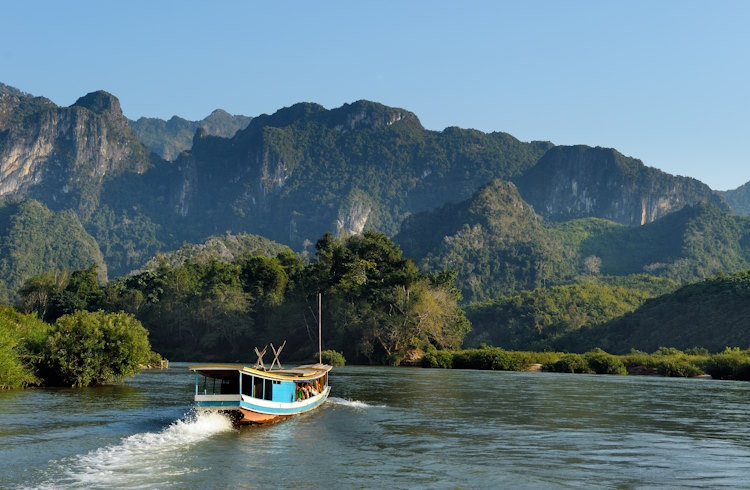
Money in Laos
With US $50 buying you a little over a million Laotian Kip, you become an instant millionaire the moment you arrive in Laos. It’s important to learn quickly to recognise the different notes and distinguish between all those zeros: you don’t want to accidentally hand over 1,000,000 Kip for a taxi ride that should only have cost you 100,000.
Also, be aware if you’re expecting to change US dollars that old, dirty or ripped notes are not accepted. Only rarely (in the most heavily-touristed areas or biggest towns) can you pay by credit card, but ATMs are a convenient solution since they are widely available in every town.
Laotian food to try
Even in Indochina, an area renowned for great food, Laotian cuisine stands out. Whether eating in tourist-class restaurants or local night markets, a sense of adventure will pay dividends. The famous ant-egg soup and fried crickets might not be for everyone, but food is freshly cooked and healthy, so this could be the ideal place to step out of your comfort zone from time to time.
You’re likely to come across the Laotian signature dish larb (sometimes spelled laab, laap, larp…) almost immediately but beware: it’s so deliciously addictive that you might not want to eat anything else! This salad of thinly sliced or minced meat (although there are also vegetarian varieties) is delicately flavored with greens, herbs, and spices.
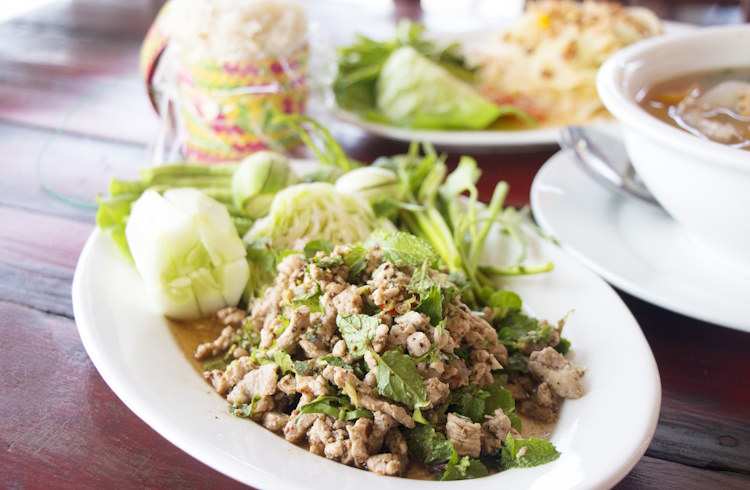
Sai oua (a hearty Laotian pork sausage) is another must-try speciality along with khao jee (crunchy baguette sandwiches, often stuffed with pâté of French colonial origin). Vegetarian delights include tum mak hoong (papaya salad) and succulent spring rolls made with rice paper and dipped in peanut sauce (although you might want to check because both dishes are frequently seasoned with fish sauce).
While you should be adventurous with the food it is wise to be a little more cautious with water. Tap water should be avoided and if you’re wise, that advice extends to ice as well. Rather than leaving a trail of empty plastic bottles as you travel, consider investing in a water bottle fitted with a filter. Lifestraw offer a variety of bottles so it’s now possible to complete an entire trip without leaving a single plastic bottle in your wake.
*If you choose to ride, consider travel insurance and be sure to comply with its requirements, such as riding with a helmet and being appropriately licensed to ride in your home country at your destination.
Related articles
Simple and flexible travel insurance
You can buy at home or while traveling, and claim online from anywhere in the world. With 150+ adventure activities covered and 24/7 emergency assistance.
Get a quote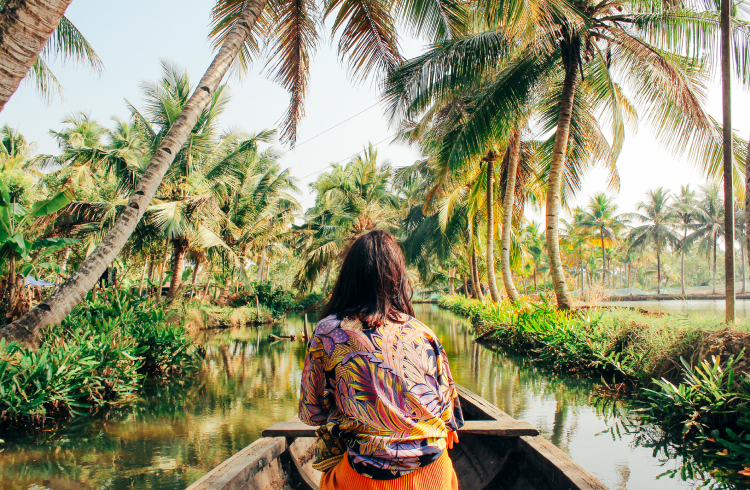

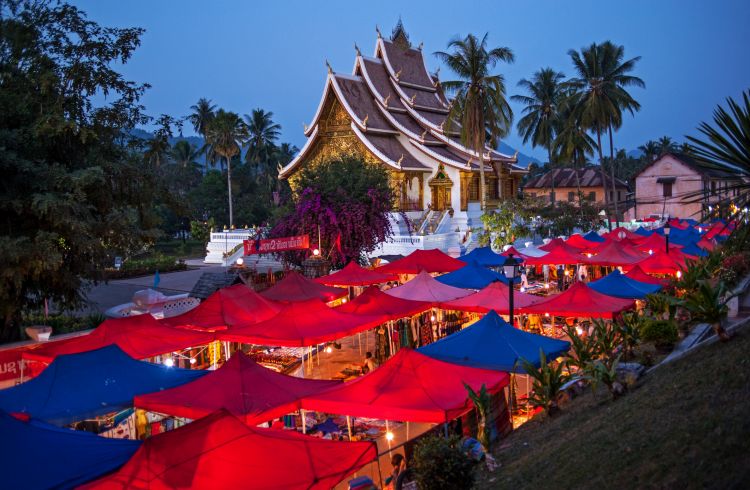
No Comments